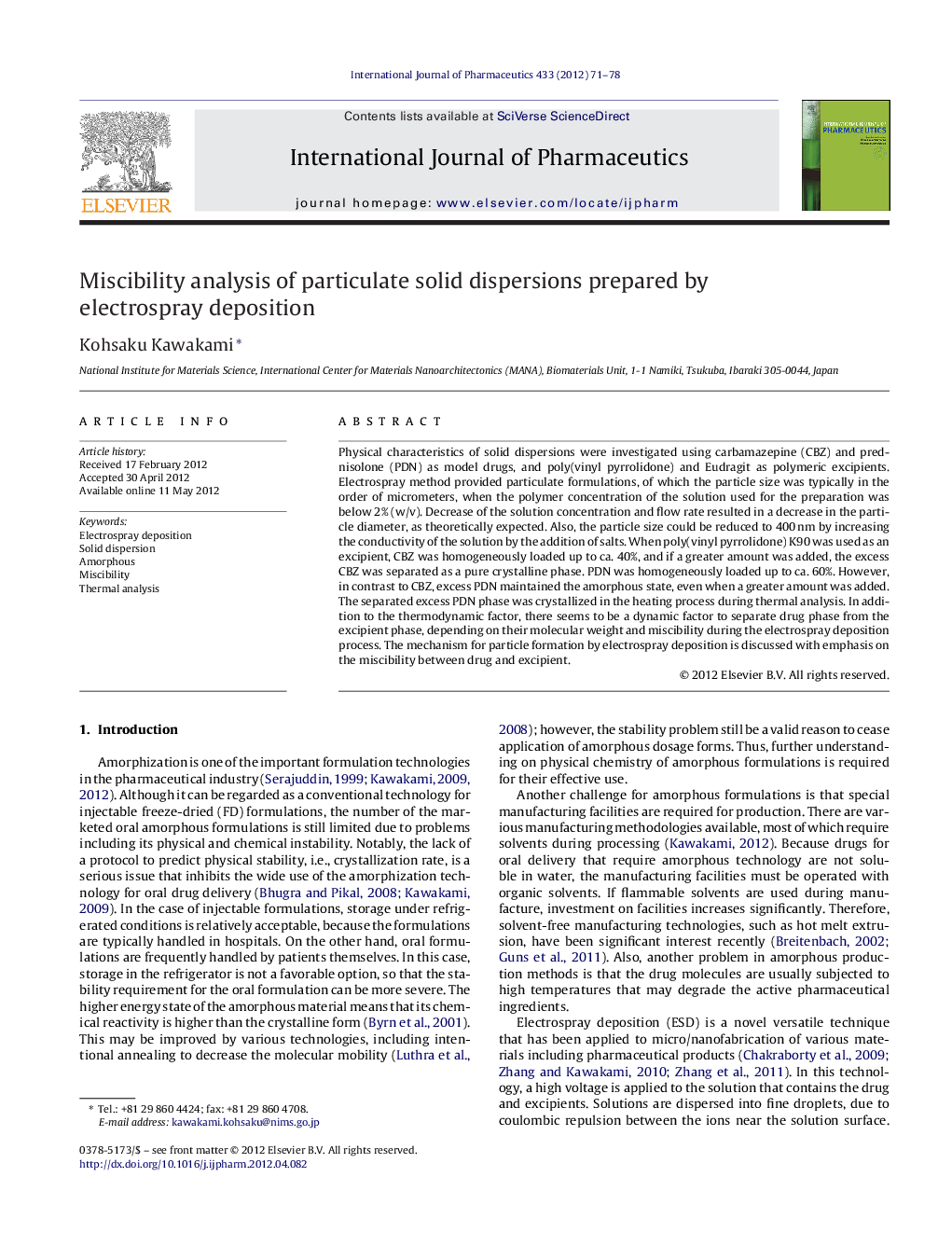| Article ID | Journal | Published Year | Pages | File Type |
|---|---|---|---|---|
| 2502905 | International Journal of Pharmaceutics | 2012 | 8 Pages |
Physical characteristics of solid dispersions were investigated using carbamazepine (CBZ) and prednisolone (PDN) as model drugs, and poly(vinyl pyrrolidone) and Eudragit as polymeric excipients. Electrospray method provided particulate formulations, of which the particle size was typically in the order of micrometers, when the polymer concentration of the solution used for the preparation was below 2% (w/v). Decrease of the solution concentration and flow rate resulted in a decrease in the particle diameter, as theoretically expected. Also, the particle size could be reduced to 400 nm by increasing the conductivity of the solution by the addition of salts. When poly(vinyl pyrrolidone) K90 was used as an excipient, CBZ was homogeneously loaded up to ca. 40%, and if a greater amount was added, the excess CBZ was separated as a pure crystalline phase. PDN was homogeneously loaded up to ca. 60%. However, in contrast to CBZ, excess PDN maintained the amorphous state, even when a greater amount was added. The separated excess PDN phase was crystallized in the heating process during thermal analysis. In addition to the thermodynamic factor, there seems to be a dynamic factor to separate drug phase from the excipient phase, depending on their molecular weight and miscibility during the electrospray deposition process. The mechanism for particle formation by electrospray deposition is discussed with emphasis on the miscibility between drug and excipient.
Graphical abstractFigure optionsDownload full-size imageDownload high-quality image (90 K)Download as PowerPoint slide
